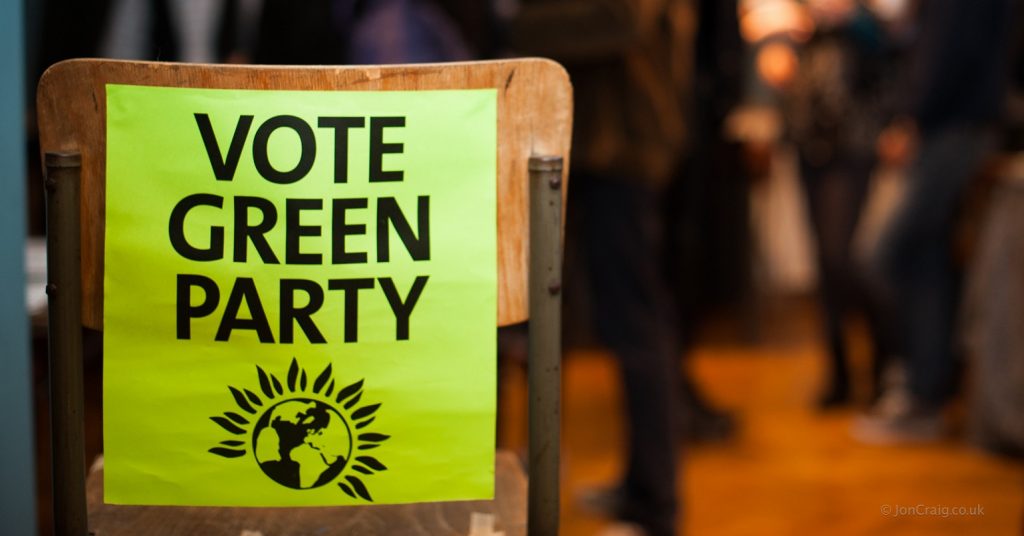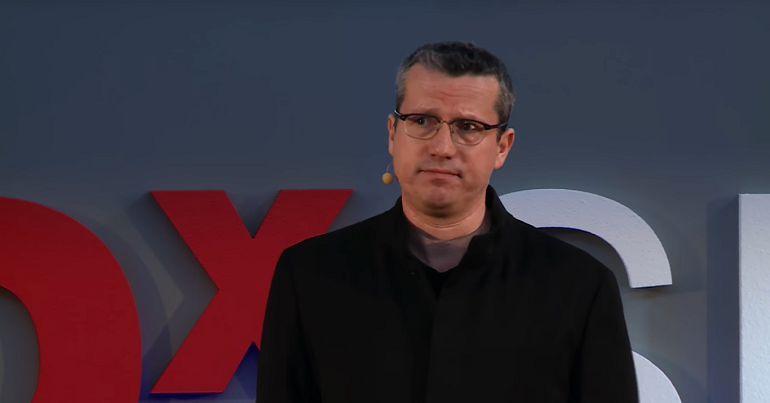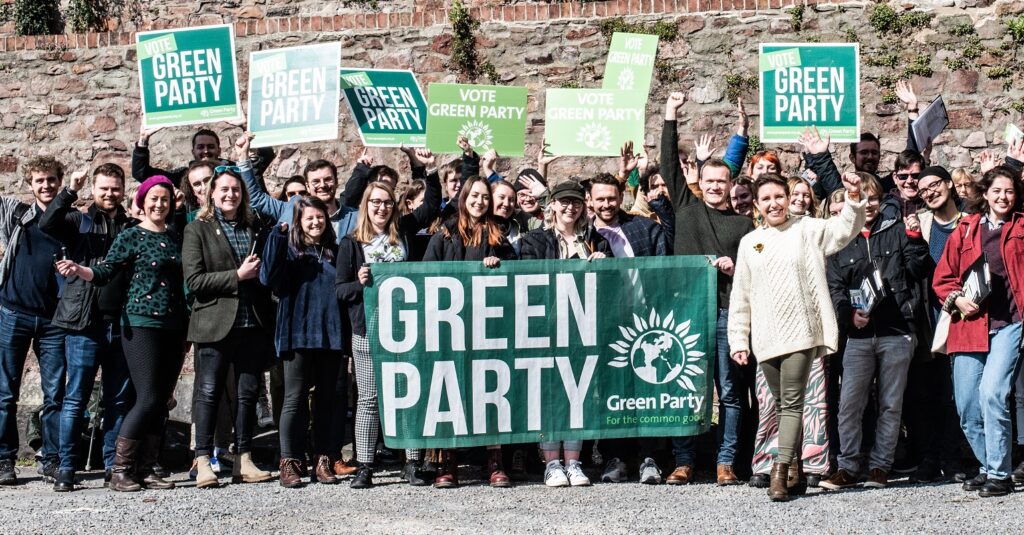Green lessons from Down Under
by Kevin Meaney (@oxkev) it first appeared on his blog
I grew up and worked in Australia before moving to the UK 13 years ago. Having recently become more actively involved in the UK Green Party I have been following the 2010 Australian election and the performance of the Australian Greens closely.
Because I am looking at Australian Politics from a progressive perspective I will mix the Liberal Party (like the UK Conservatives), the National Party and the Liberal National Party into a single pudding the called the LNP.
Up until the last 8 or so years during the gradual rise of the Greens in the Australian Parliament*, Australian Politics had been dominated by 3 parties, the LNP, Labour and the Australian Democrats (AD). The AD always struggled to gain decent electoral success and the most influence they ever gained was to have 9 Senators and often held the balance of power in the Australian Senate**. Like the LibDems in the UK it was often hard to know what the AD stood for. In April 2001 Natasha Stott Despoja became leader of the AD and pulled the AD to the left on social and economic issues, but bitter infighting continued amongst the leadership of the AD and Stott Despoja resigned from the leadership in August 2002. Since then the AD have been in electoral meltdown with their vote collapsing and in 2008 lost the last of their remaining seats in the Senate. In the 2010 election the total vote for the AD in the Senate was 1.3% and the vote in the House of Representatives was 0.2 %. The Australian Greens have completely taken over as Australia’s third
party.
In the 2010 election the total first preference Green vote in the House of Representatives*** was 11.4 % and in the Senate the Greens polled from 10% in New South Wales (NSW) to 20% in Tasmania. The Green vote in the two territories ACT and the Northern Territory was also high but didn’t result in the election of any senators because both Territories only send 2 Senators each to the Senate. I believe that the number of Green Party Senators is a fair reflection of their national vote. In the 2010 election 2 of the 5 Green Party Senators were up for reelection and they were returned to office plus the Green Party gained 4 new Senators equalling the best results of the AD in 1999.
In the 2010 election The Australian Greens gained their first seat in the Australian House of Representatives in the
The Preferential Voting System is far from proportional. The Greens received 11.4 % of the vote but have managed to win only 1 seat, a proportional system would have resulted in around 18 seats in the House of Representatives.
I wrote this piece because I wanted to think about the implications of the performance of the Greens in the Australian election and what this means for the Greens in the UK. In the end I don’t think there is a lot that we can learn. But there are a few things.
1. I think the advantage of the Preferential Voting System over First Past the Post is that it makes the support for smaller parties like the Greens more visible. I think that the 11.4 % vote for the Greens still under represents the support for the Australian Greens because some people are confused how the voting system works and still only vote for the main parties because of the fear of wasting their vote. However, I believe that the total vote of 1% for the Greens in the UK 2010 hides badly their real level of support because the first past the post voting system frightens people into voting conservatively.
2. The electoral results in the Australian Senate for the Greens
demonstrates the potential for success that the Greens can achieve with a decent electoral system.
3. I think the biggest lesson from Australia relates to the LibDems and the demise of the Australian Democrats. Party members were mostly to the left of their representatives in the Senate and when the membership elected a leader who more accurately reflected their views this resulted in instability at the top level of the party and permanent infighting. The infighting continued after the removal of Stott Despoja and the return of the AD to their usual vague politics turned off the Australian electorate.
4. The Greens in the UK need to do everything they can to show that it is normal to vote Green. They should be highlighting where possible not just Caroline Lucas’ win in Brighton but also the results of the elections for the European Union. This is not deceptive in relation to Westminster elections because the first past the post voting system makes voters who support smaller parties fearful to vote for the party they believe in. But once they understand that voting Green gets results support for the Greens will increase.
5. That for the Greens the Democrats reduce their voice for being heard. The electoral success in Australia for the Greens only blossomed after the AD self destructed. Once that had happened the Greens started to do well. Not just because they picked up former AD supporters but because they stand for decent social democratic policies as well as environmental policies. Their voice as the third party in Australian politics is much clearer than that of the old AD and that their voice in the media is now heard more often because they are the third party. Unlike the AD the Greens I believe will hold and sometimes even exceed the 9 Senators that they have elected because they represent a truly socially left progressive party.
The similarity of outcome between the recent UK and Australian elections is considerable. Neither of the main parties are able to form a Government on their own, the result in both cases makes it slightly easier for the Conservatives to form a Government though I think in Australia the result is more finely balanced than in the UK. The biggest difference is that the Senate in Australia is really going to be hard going for the Conservatives because Labor and the Greens hold a clear majority which will only increase in size when the Greens get to add their new Senators. The Conservatives will find negotiating with the Greens much harder going than they did when they had to negotiate with the Australian Democrats to get their legislation through the Senate.
* The Australian Parliament has two chambers, the House of Representatives often called the Lower house and the Senate often called the Upper House.
** The Senate has 76 members 12 for each state and 2 each for the two Territories (NT and ACT). At each election all of the Senators from the NT and ACT are up for reelection and half of the Senators from each state are up for reelection unless there is an Double Dissolution of Parliament triggered by a political crisis. For example the sacking of the Whitlam Government by the Governor General Sir John Kerr in 1975 in which case all Senators are up for reelection. Senators are elected for a fixed term of 6 years which means that the Senators do not take up office until the completion of the term of their predecessors in the Senate. During the first 7 months of the Rudd Government the Senate was controlled by the opposition as the Senators elected in December 2007 did not take up their seats until July 2008. Since each state has the same number of Senators NSW with a population of 7 million is underrepresented whilst Tasmania with a population of 500 thousand is over represented.
*** The House of Representatives has 150 members and at a General election all members are up for reelection. The party that controls the majority of seats in the House of Representatives forms the Government. Voting uses the preferential voting system.
**** Preferential Voting system is different from the Alternative Vote (AV) system or AV+. The Preferential Voting system in a House of Representatives allows voters to show their first preference thus making it possible to see what kind of electoral support a party like the Greens has unlike the the first past the post system in the UK. However in terms of electoral outcome the Preferential Voting system is still strongly biased in favour of the two major political parties.
***** The need for the electoral commission to do a recount is because during the count on election night the electoral commission counted the second preferences based on assumption that the contest was between the Liberal and Labor candidates. The recount will not start until Monday.




Though you can’t vote above the line in the Reps Dale. There is compulsory preferencial voting for both houses (though most people number above the line for the senate). The difference is that the votes are counted using AV for the Reps and STV for the senate.
Dale,
Your right, That should just be AV+.
Kevin
On your fourth note:
I see how it’s different from AV+, but how is the preferential system different from the alternative vote?
In both cases, voters rank their choices; in both cases, losing candidates are eliminated and votes for them re-distributed until one candidate holds half the ballots.
So what’s different? (Unless you’re talking about the “above the line” option, which allows you to use a ordered preference list supplied by the party of your choice if you don’t want to bother doing it yourself; but that just changes how your ordered preference list is created, not any part of how the list are then used to select a winner.)
I think your right in both aspects with respect to Wilkie. Saturday evening and Sunday morning uk time when I wrote the piece Wilkie was shown to have won the seat but the recount of the votes on Monday gives the seat clearly to Labour.
Kevin
I don’t think Wilkie will win in Denison – likely to be Labour. Also, although a former Green he’s much more of a centrist, and perversely an ALP win there may be better.
First, it makes PM Abbott less likely, as it makes a tie or even an ALP lead more likely, so reassuring the bush independents that they’re honouring the will of the people.
Second, it reduces the complexity of any negotiation with the ALP.
Third, I’ve spent too long following this over the last week.